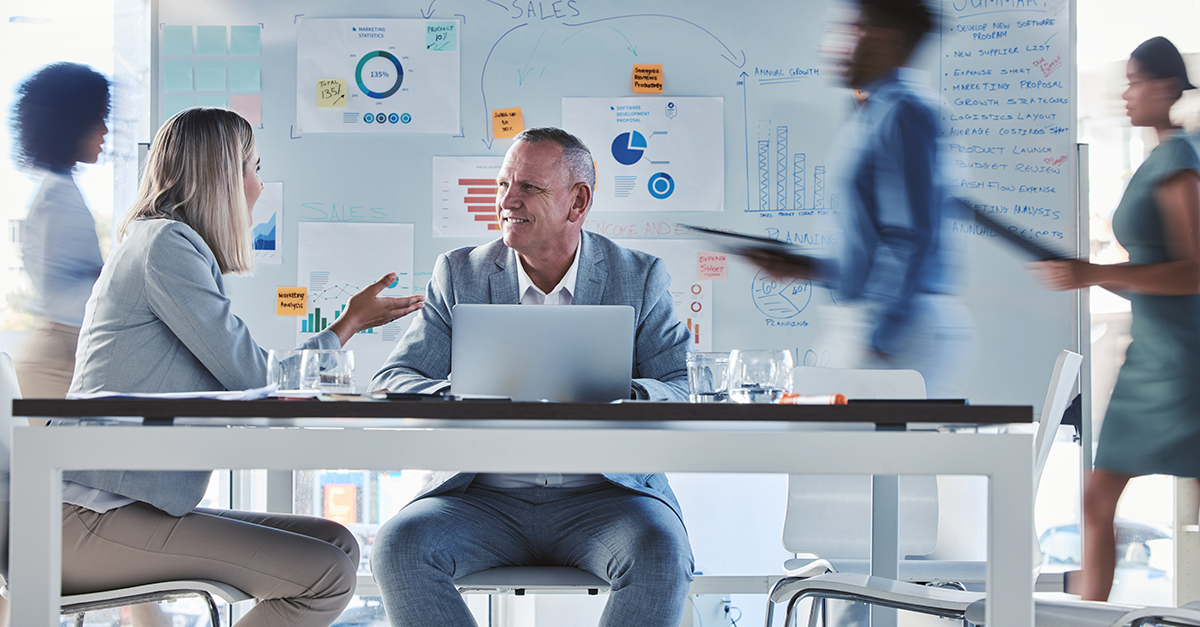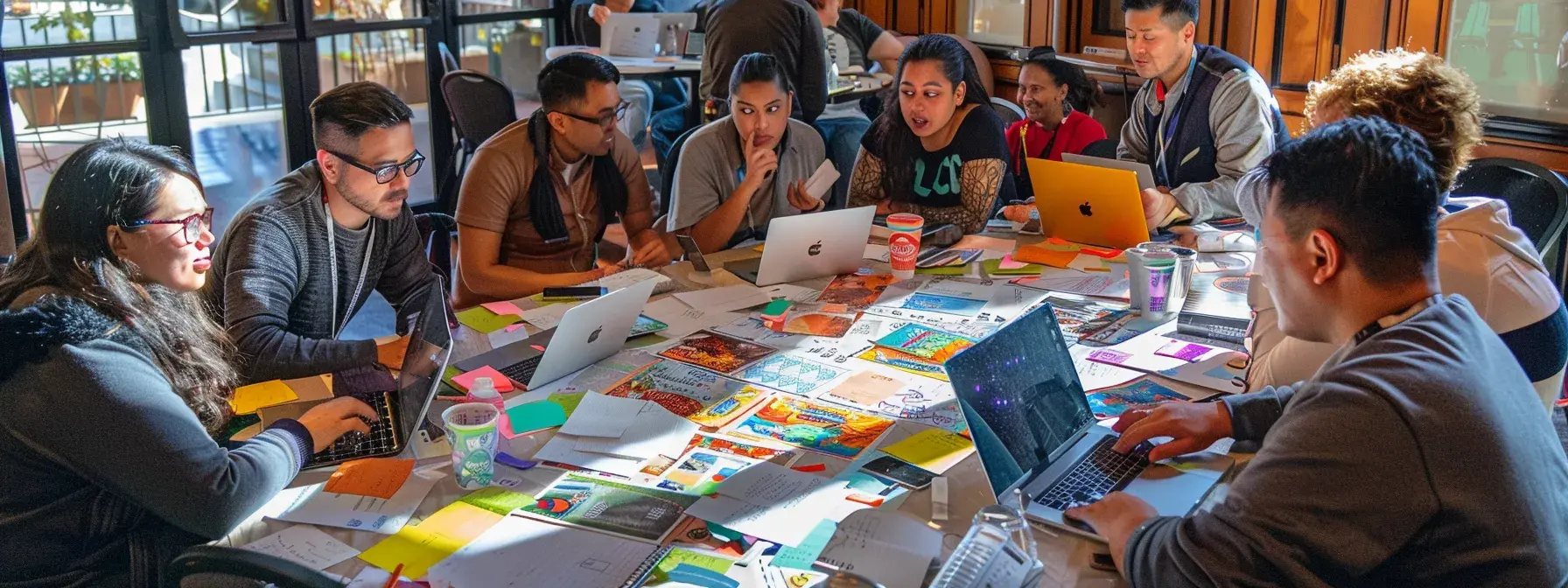The other day I was having a conversation with one of my new favorite generative AI friends, Bard, about a topic that had come up with one of our prospects. This prospect, like so many others, is in the process of trying to adapt to the new reality of the cost of capital being A LOT more expensive and harder to come by than it was a year ago.
Profitability from a customer’s first order is their absolute top priority and they want to implement growth strategies that align with that goal. At Finch we have a clear cut opinion and methodology around this, but I wondered, “What would Bard say?” As Google’s answer to ChatGPT, it should have a very healthy data set to train from to answer such things.
Q: What are the most important metrics a product-based business owner should focus on to drive profitability?
Bard:
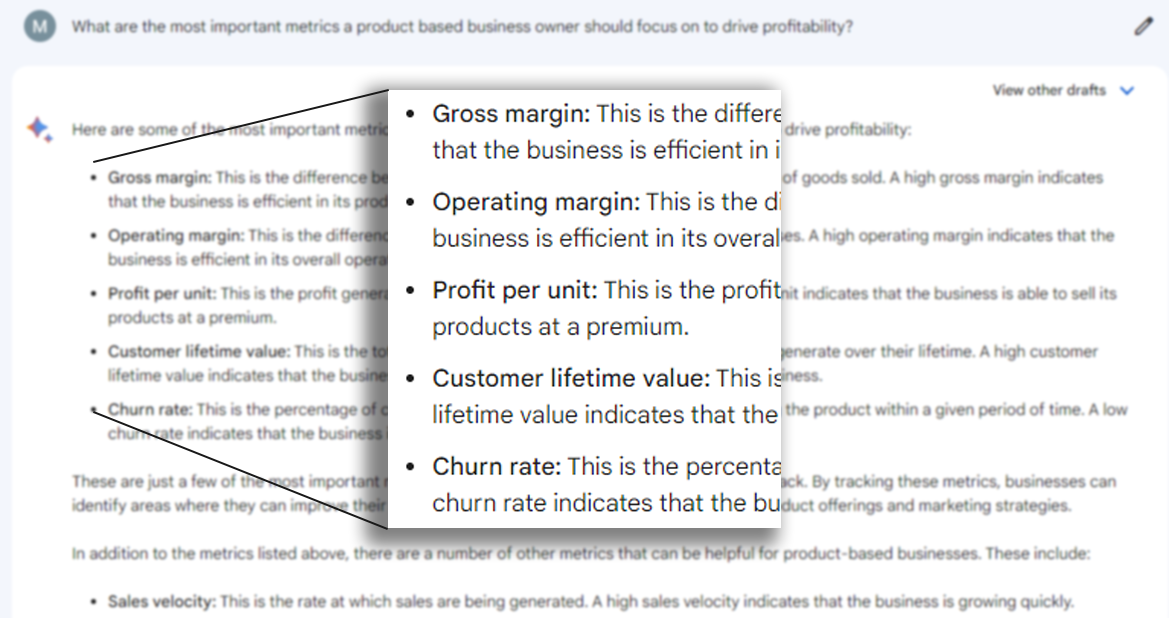
The answer went on to suggest some vertical/industry-specific metrics, but according to Bard, we should focus on:
- Gross profit margin
- Operating margin
- Profit per unit
- Customer lifetime value (CLTV)
- Churn rate
All solid and important metrics to be sure. This was going well. So, I asked the logical follow-up.
Q: As a business owner concerned with ad campaign profitability should I favor ROAS or Margin when judging campaign success?
Bard:

I’m continually impressed by how concise and insightful Bard’s replies are, so I wasn’t surprised to learn that Google’s AI felt strongly about the merit of accounting for margin metrics in advertising campaigns. However, Bard was about to throw me a curve ball.
Q: Does Google PMAX take margin information into account with automated bidding?
Bard:
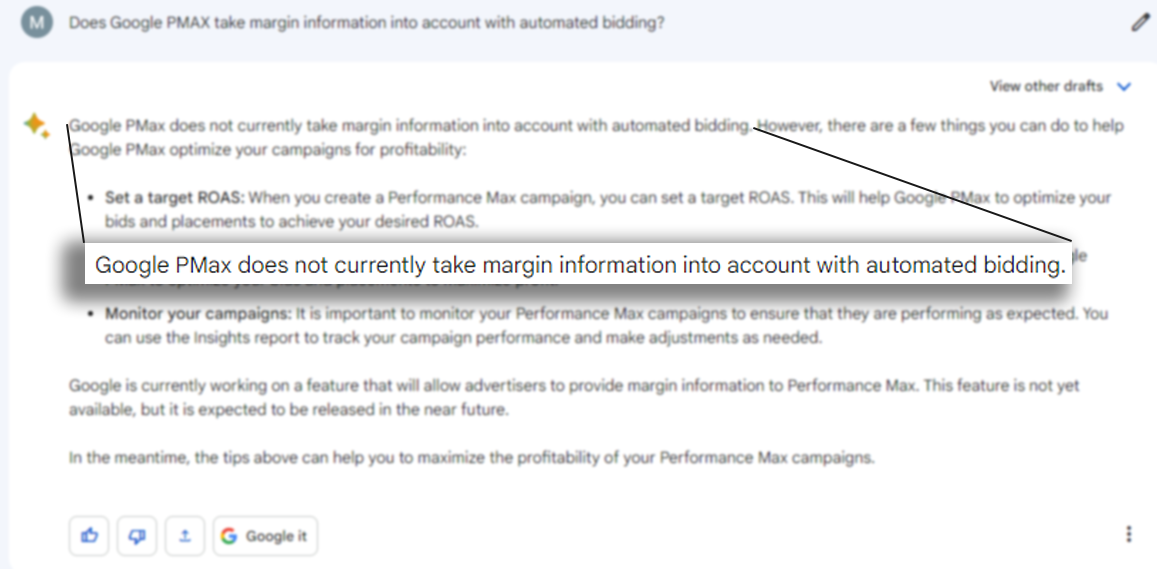
Wait a minute. Why wouldn’t they consider profit margin information in campaign bidding? I thought we’d just established margin information was critical for understanding how much you’re making from each sale in an ad campaign. I wondered if Facebook took a similar approach.
Q: Does Facebook take margin information into account with automated bidding?
Bard:

According to Bard, Facebook Advertising also does not consider margin in their automated bidding system. I'm seeing a trend here. So, what about Amazon Advertising?
Q: Does Amazon take margin information into account with automated bidding?
Bard:

The trend continues. Bard says Amazon does not take margin information into account with automated bidding either.
It’s important to note that just below Bard’s question bar is the disclaimer “Bard may display inaccurate or offensive information that doesn’t represent Google’s views.” So, we need to bear that in mind when reviewing its responses. But in doing additional research, it’s also of merit to note that Bard’s responses can be verified as true by many reliable sources.
But this all begs an obvious question with an obvious answer.
Why do all of these ad platforms focus on ROAS instead of Margin?
Here’s my takeaway: ROAS is a great measure for Google, Meta, Amazon and other ad platforms to endorse as a success metric because it maximizes their revenue from you, the advertiser.
However, if your goal is to run a profitable business supported by profitable ad campaigns, be very cautious about focusing on ROAS in isolation. Contribution margin is a critical part of the profitability equation and it’s completely absent from consideration with most ad platforms.
Why is margin important?
I was never a fan of story problems or math in school, but understanding contribution margin is critical if profitability is important to you. I’ll be brief so please stick with me for a moment.
Let’s say you sell a product for $100 and your net margin is 15%. You spend $500 on a Google PMAX campaign and get a ROAS of 5 or $2,500 in total sales. Great results, right? Actually, not so much. Assuming no returns or rebates, you just lost at least $125.
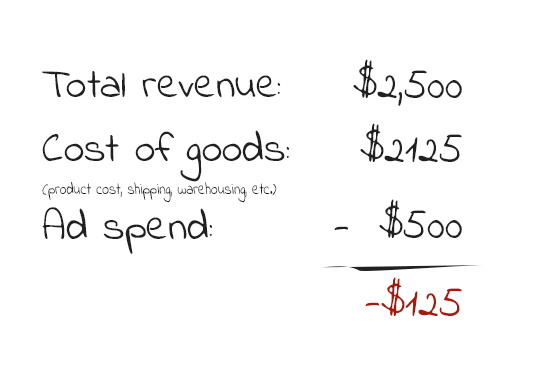 Conversely, let’s say you sell a product for $100 and your net margin is 45%. You spend the same $500 on a Google PMAX campaign and get a ROAS of 2.5 or $1,250 in total sales. Bummer, a ROAS of 2.5 is usually disappointing. But wait, you actually made a profit of $63!
Conversely, let’s say you sell a product for $100 and your net margin is 45%. You spend the same $500 on a Google PMAX campaign and get a ROAS of 2.5 or $1,250 in total sales. Bummer, a ROAS of 2.5 is usually disappointing. But wait, you actually made a profit of $63!
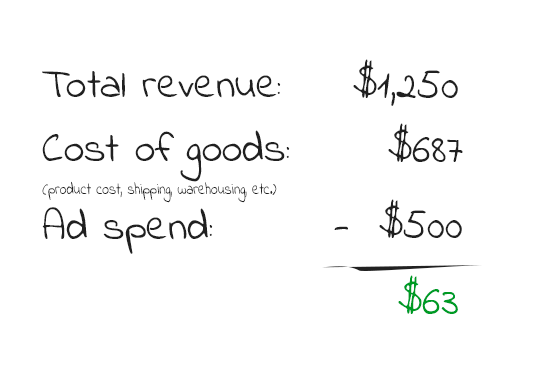 As marketers, we’ve been trained to look at ROAS as the queen of all campaign metrics, but in isolation it’s a trap.
As marketers, we’ve been trained to look at ROAS as the queen of all campaign metrics, but in isolation it’s a trap.
If margin isn’t considered in each and every paid media campaign, your great ROAS performance may be leading you down a path of financial hardship or worse.
ROAS Profitability Calculator
Use your own campaign data below to calculate campaign profitability. We don't save this data in any way.
Using Margin to Achieve Profitable Growth
To achieve profitable growth, we need to re-prioritize our campaign metrics to make sure that margin is always a primary consideration. Meta, Google, Amazon and other ad platforms aren’t going to do this for you because it’s not in their best interest.
Your focus on profitable ad campaigns works against the revenue growth objectives of ad platforms. Brands need to have an internal or external advocate working to make sure that your campaigns and supporting technology prioritize your profitability not theirs.
As an advocate for D2C sellers, Finch takes a 2-prong approach to making sure that we help our customers drive profitable growth.
1. Optimize for Profitability
Each campaign we design in partnership with our customers has margin as a first class consideration in addition to ROAS and other metrics. Whether looking at simple Contribution Margin or other metrics like Marketing Efficiency Ratio (MER), we make sure that each campaign is designed and managed for profitability.
2. Unify Tech & Data
To help our customers stay ahead of the game we develop technology like Finch’s Revenue Operations Platform to make sure that data feeds from ad platforms are married with their eCommerce application to integrate campaign data and shopping cart data. The combination of these data sources allows for a higher fidelity view of campaign performance to reconcile actual sales with attribution based revenue provided by ad platforms.
Whether you manage your paid media in-house or through an agency, take a second look at the metrics by which you judge campaign success. If margin based metrics aren’t front and center in your campaigns, your solid ROAS performance could be a recipe for heartache.

